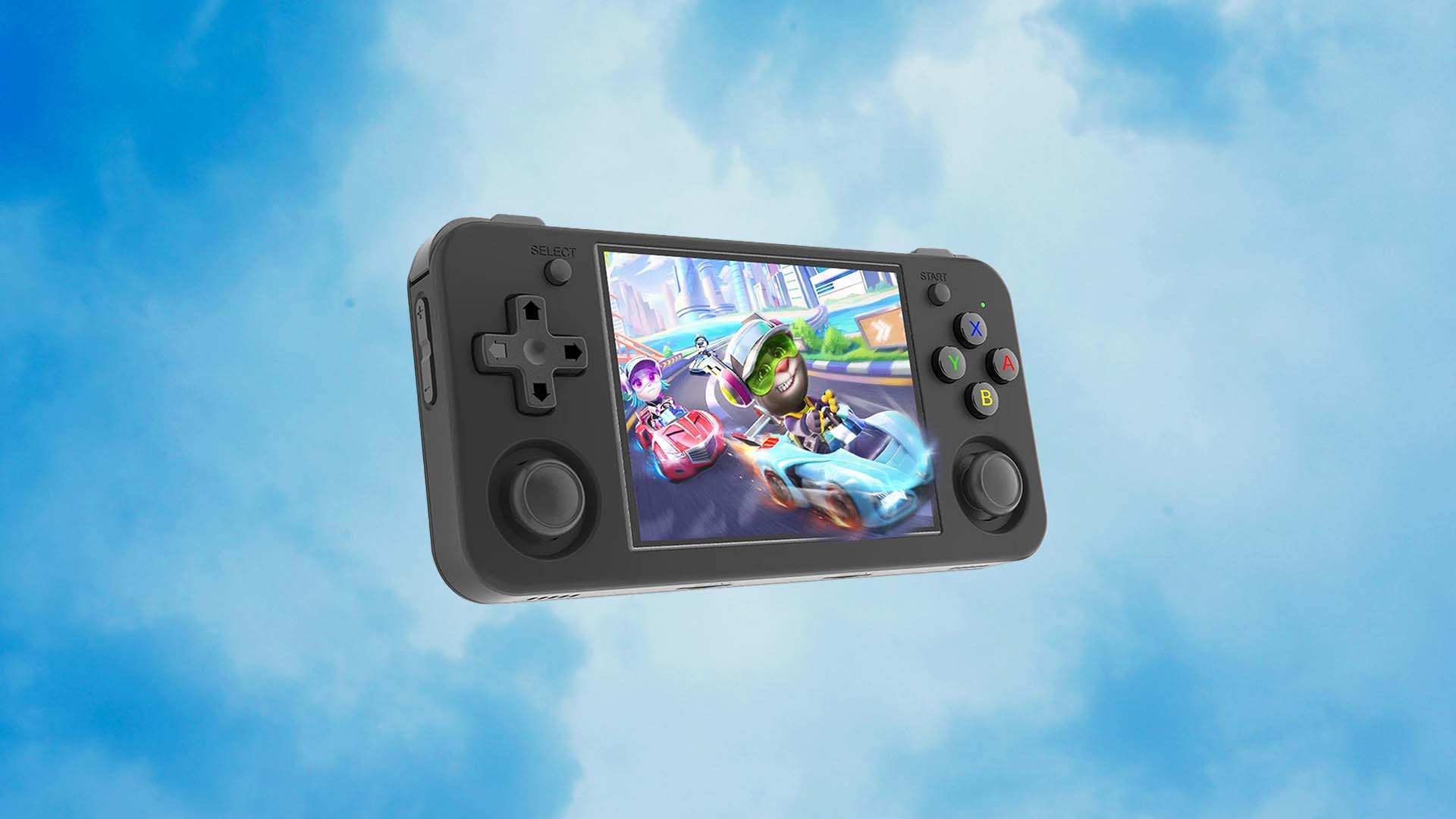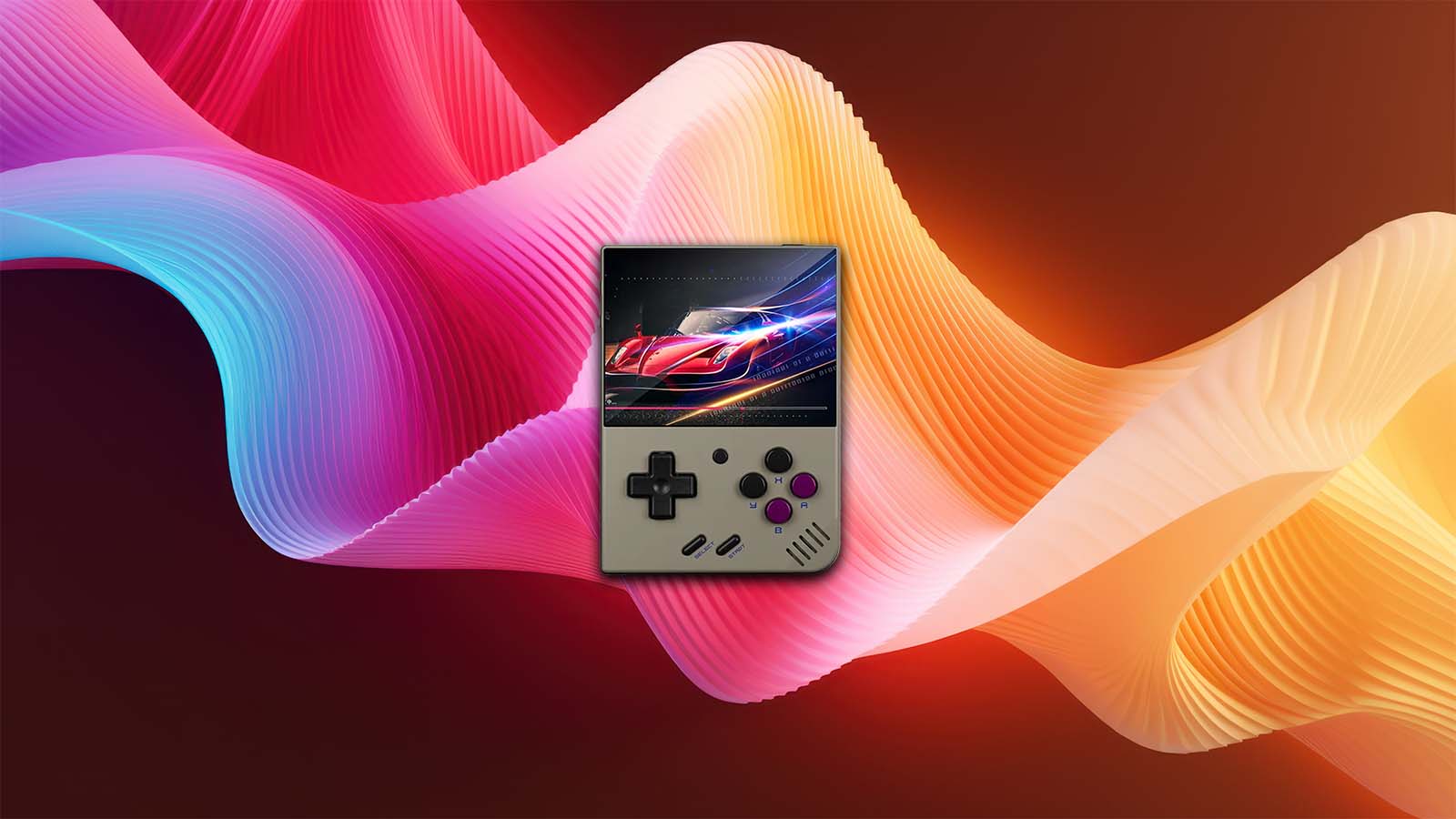So, you’ve just picked up an Anbernic RG35XX H—or maybe you’re thinking about diving into the world of retro handheld emulation—and you’re wondering where to start. Don’t worry, we’ve got you.
The RG35XX H is a sleek, affordable, and surprisingly powerful little device that punches above its weight. With a comfy horizontal form factor, WiFi connectivity, HDMI out, and the ability to emulate classics from the NES all the way up to select PSP and Dreamcast titles, it’s a near-perfect entry point for newcomers to the retro gaming scene.
Whether you have an RG35XX H or RG35XX Plus, this comprehensive beginner’s guide will walk you through every step of getting the most out of your handheld. Think of it as your one-stop handbook for turning a cool handheld into the ultimate nostalgia machine. Let’s get started.
Emulation Performance
Let’s talk guts—because the RG35XX H may look like a retro throwback, but under the hood, it’s punching way above its weight class.
Chipset & Internals
- Powered by the Allwinner H700 CPU and backed with 1GB of LPDDR4 RAM, the RG35XX H handles classic systems with ease—and even flirts with some more demanding stuff.
- You’re not getting PS2 or GameCube here (this isn’t a Steam Deck killer), but for retro purists, it nails the golden age of emulation.
Systems It Runs Like a Dream
- NES, SNES, Genesis/Mega Drive, Neo Geo: Flawless. These run silky smooth without any hiccups.
- Game Boy, GBC, GBA: Perfect performance. The screen’s 4:3 aspect ratio gives Game Boy games that chef’s kiss level of presentation.
- PlayStation 1: This is where the RG35XX H really shines. Most PS1 titles run full speed, complete with smooth 3D rendering and no audio stutter.
- PC Engine / TurboGrafx-16: Effortless. Sprites are sharp, and sound emulation is spot-on.
Systems It Can Handle (With Tweaks)
- Nintendo 64: Some lighter games are playable with frameskip and tinkering, but it’s hit-or-miss.
- Dreamcast, PSP: Technically possible, but not ideal. Don’t come in expecting a flawless “God of War” experience here.
In short? If your retro dreams live between 8-bit and 32-bit, the RG35XX H delivers consistently stellar emulation performance. It’s not an all-in-one powerhouse, but it knows what it’s good at—and it sticks the landing.
Why You Should Replace the Stock SD Cards ASAP
Let’s get one thing straight: the RG35XX H is a beast for the price—but those stock SD cards it ships with? Hot garbage. They’re the equivalent of fast food napkins trying to pass as fine china. Yes, they technically get the job done, but not for long, and not well.
What’s Wrong With the Stock SD Cards?
- Unbranded and slow: These cards are often low-grade, with inconsistent read/write speeds that can cause long boot times, laggy menus, and random crashes during gameplay.
- Risk of data corruption: Save files and game data can vanish into the digital void if the card fails. That 100% Symphony of the Night run? Gone.
- Poor file organization: Preloaded games are usually a jumbled mess, with broken ROMs, mismatched box art, and weird naming conventions that make navigating the library a headache.
The Upgrade Path: What You Should Do Instead
- Get two quality SD cards: One for the OS (16–32GB is plenty) and one for games (64GB–256GB depending on your appetite).
- Go for known brands: Samsung, SanDisk, Kingston—any reputable brand will offer better speed, longevity, and reliability.
- Format and start fresh: Download GarlicOS or another custom firmware, flash it clean, and load up your own well-curated ROMs. Bonus: you’ll avoid any legal grey areas by not using sketchy preloaded content.
How to Add Games to Your RG35XX H
So you’ve got your shiny new RG35XX H, you’ve swapped out the janky stock SD cards (good call), and now you’re ready to load it up with your favorite retro classics. Whether you’re chasing Chrono Trigger or craving some Metal Slug, here’s how to get games onto your device without breaking a sweat—or the law.
What You’ll Need
- A quality microSD card (ideally already set up with GarlicOS or your preferred custom firmware)
- A microSD to USB adapter or built-in card reader
- A computer (Windows, macOS, or Linux—it’s all good)
- Your legally obtained game ROMs (no judgment, just keep it clean)
Step-by-Step Guide
- Turn off the RG35XX H completely. Remove the second SD card—the one meant for games (usually in slot TF2).
- Insert Into Your Computer. Use an SD card adapter or built-in reader. The card should mount and appear as a drive on your computer.
- Navigate to the ‘ROMS’ Folder. Example path: /ROMS/SNES/
- Copy your game files (usually .nes, .sfc, .gba, .bin, .cue, etc.) into the correct folders. Keep BIOS files in the right place too, especially for PS1 and arcade emulation—some systems won’t run without them.
Pro tip: For PS1 games, always include the .cue file with your .bin—they work as a pair.
- Once everything’s copied over, eject the SD card safely, pop it back into the RG35XX H, and boot it up.
How to Connect to WiFi on the RG35XX H
One of the sleekest upgrades to the RG35XX H over its predecessors? Built-in WiFi. Finally. That means wireless file transfers, scraping box art, syncing save states, and maybe even some light retro multiplayer action—all without pulling out a single cable.
Here’s how to get your RG35XX H online and connected to WiFi in just a few taps.
- Boot Up Your RG35XX H. Make sure you’re on a firmware version that supports WiFi. GarlicOS 1.4+ is a safe bet.
- Press the MENU button from the home screen to open the main settings.
- Scroll to “Network Settings” or “WiFi”, then toggle WiFi from OFF to ON. The device will now scan for available networks.
- Choose your home WiFi network (2.4GHz only—this device doesn’t do 5GHz).
- Use the on-screen keyboard to type your password. Yes, it’s a little clunky—just take it slow. Hit “OK” when you’re done.
- Wait for connection confirmation. Once connected, you’ll see a status indicator or message confirming you’re online. Some firmware may display your IP address too.
Updating the Stock Firmware
So you’ve got your hands on the RG35XX H and you’re wondering: “Is there a better version of this firmware?” The answer is a resounding yes—but getting there takes a few extra steps.
If you want a smoother UI, improved emulator support, bug fixes, or even just the satisfaction of having the latest and greatest, you’ll need to manually update your RG35XX H firmware.
Let’s break it down.
Why Aren’t OTA Updates Supported?
Unlike your phone or Steam Deck, the RG35XX H doesn’t support over-the-air (OTA) updates on official firmware. This isn’t Android—it’s a custom Linux-based OS with no background update service. That means you’ll need to flash firmware manually, just like in the early Android ROM days or PSP custom firmware scene.
But don’t worry—it's not hard, and we’ve got your back.
What You’ll Need
- A microSD card (the “OS” card—usually the first SD slot)
- A computer with an SD card reader or microSD to USB adapter.
- The latest firmware image
- A tool like Balena Etcher or Raspberry Pi Imager
⚠️ Warning: This process will wipe your system SD card. Your games and saves are safe if they’re stored on a separate card (which is the norm). But still—back it all up just in case.
How to Manually Update RG35XX H Firmware
- Back up your current SD card. Copy everything to a folder on your PC, especially any save files or BIOS files you’ve added.
- Download the latest stock firmware:
Official Anbernic RG35XX H firmware download page - Insert your microSD card into your computer.
- Use Balena Etcher or Raspberry Pi Imager to flash the .img file you downloaded onto the card.
- Safely eject the SD card, then insert it into your RG35XX H.
- Boot up the device. It should auto-expand and load into the new OS. That’s it!
Bonus Tip: Keep a “Clean Image” Saved
After flashing and setting up your favorite tweaks, make a backup image of your SD card. That way, if things ever go sideways, you can restore your perfect setup in minutes.
Adding Box Art with Skraper
You’ve got your ROMs loaded. You’ve updated your firmware. But now your game list looks… kinda mid.
Where’s the flair? The nostalgia? The polish?
It’s time to upgrade your library with box art, metadata, and even game descriptions—and the best way to do that is with Skraper.
What Is Skraper?
Skraper is a free metadata scraper for emulation frontends (like EmulationStation or Batocera), and it works beautifully with the RG35XX H.
It pulls gorgeous box art, screenshots, game descriptions, and logos from reliable sources like ScreenScraper and TheGamesDB. Think of it like the Spotify album art feature… but for your retro library.
What You’ll Need
- Your ROMs organized into folders by system
- A Windows PC (Skraper only runs on Windows natively)
- A ScreenScraper account (free, but required for heavy use)
- A USB reader or microSD-to-USB adapter
How to Add Box Art with Skraper (Step-by-Step)
- Download and install Skraper: Skraper Official Site
- Insert your SD card (the one with your ROMs) into your PC.
- Organize your ROMs by system.
- For best results:
- Put NES games in a NES folder, SNES games in SNES, etc.
- Make sure the file names are clean.
- Launch Skraper and choose your platform (EmulationStation is the default and works for GarlicOS/MuOS setups).
- Select your system folder (e.g., the SNES folder), then configure your output:
- Box art only? Choose Box (3D) or Box (2D) in the media section.
- Want screenshots and logos too? Check those options.
- Set naming convention to game_name.jpg to match your ROMs.
- Start scraping. Skraper will download all the art and metadata into a media folder or alongside the ROMs, depending on your settings.
- Safely eject your SD card and reinsert it into your RG35XX H.
- Reboot your handheld—your front end should now show full box art and metadata.
Exploring Custom Firmware Options for the RG35XX H
If you’ve been enjoying your RG35XX H with stock firmware, that’s great. But if you want to really unleash the handheld’s potential, it’s time to talk custom firmware—the not-so-secret sauce that can transform your retro experience from good to downright god-tier.
There are now four main custom firmware options for the RG35XX H:
GarlicOS, MuOS, minUI, and the sleek newcomer, Knulli.
Each brings something different to the table—whether you’re all about performance, aesthetic minimalism, or deep customization.
GarlicOS: The Fan Favorite
Originally created by Black-Seraph for the original RG35XX, GarlicOS has been adapted to the H model and remains one of the most popular CFW options.
Why Choose GarlicOS?
- Blazing-fast boot times
- Simple, console-like UI
- Automatic save states & resume
- Easy to organize your ROMs by system
Ideal for:
Players who want to turn on their handheld and jump straight into gaming with minimal setup or distractions.
MuOS: The Powerhouse
MuOS is a Linux-based firmware developed by ex-Adroit developers, offering the most robust feature set on the RG35XX H. It’s not just a firmware—it’s practically a retro gaming OS.
Why choose MuOS?:
- Wi-Fi support out of the box (great for scraping, FTP, and networked RetroArch play)
- Beautiful themes and a modern UI
- Advanced settings for overclocking, shaders, per-core configs
- Built-in package manager and plugin system
Ideal for: Tech-savvy players who want their handheld to function more like a Raspberry Pi-powered mini console—with all the bells and whistles.
minUI: The Minimalist’s Dream
minUI is a stripped-down, ultra-efficient firmware that’s all about simplicity. It boots fast, looks clean, and runs lean.
Why go minUI:
- Pure minimalism—no logos, no extra layers
- File-based structure, just drag & drop your ROMs
- Extremely low power usage
- Easy to customize folder art and emulator associations
Ideal for: Those who want their RG35XX H to be as distraction-free as a classic cartridge console. Retro purists, this one’s for you.
Knulli: The Stylish Newcomer
Knulli is the freshest face in the CFW space—and it’s making serious waves. With a slick UI, fast performance, and high-end polish, Knulli feels like a next-gen front end for retro gaming.
Standout features:
- Eye-catching carousel UI with cover art
- Smooth transitions and intuitive navigation
- Great support for PS1 and even light PSP titles
- Easy-to-use game scraping with built-in Wi-Fi support (MuOS base)
Ideal for: Aesthetic-first gamers who want something that looks as good as it plays. It’s form and function, with the community rallying hard behind it.
Quick Feature Comparison
| Feature | GarlicOS | MuOS | minUI | Knulli |
|---|---|---|---|---|
| Boot Speed | Fast | Moderate | Instant | Moderate |
| Customization | Low | High | Medium | High |
| Wi-Fi Support | No | Yes | No | Yes |
| Emulator Performance | Solid | Best | Solid | Best |
| UI Polish | Basic | Modern | Minimal | Gorgeous |
| Ease of Use | Easy | Intermediate | Easy | Intermediate |
| Best For | Casual players | Power users | Purists | Style seekers |
Final Tips for New RG35XX H Owners
You’ve unboxed it, you’ve installed the firmware, you’ve loaded up your favorite ROMs. Now what? Before you get too deep into your backlog of retro classics, here are some pro tips every new RG35XX H owner should know to keep things running smoothly, save your progress, and futureproof your setup.
Save File Locations & Backups
First rule of retro gaming on a handheld: don’t lose your saves. Whether you’re deep into Final Fantasy Tactics or have the perfect run going in Castlevania: Symphony of the Night, you’ll want to back up those precious save files.
Where to find them:
- GarlicOS & minUI:
- Save states and SRAM saves live in the SAVES/ folder within each system directory (e.g., Roms/PS1/SAVES/).
- Automatic saves are often handled by RetroArch cores and are stored separately as .state or .srm files.
- MuOS & Knulli:
- Saves are typically found under /home/root/.config/retroarch/saves/ (internal Linux path).
- Use Wi-Fi FTP or SD card access to manually back these up.
Backup Tip: Regularly drag your entire SAVES/ directory or RetroArch save folder to your PC or cloud storage. Trust us—nothing stings like losing a 20-hour RPG save.
Managing Storage Space Like a Pro
Even with a big microSD card, your RG35XX H can fill up fast—especially if you’re throwing full PS1, Neo Geo, and arcade sets on it.
Here’s how to keep things tidy:
- Be selective with ROMs: You don’t need every version of Street Fighter II. Curate your collection.
- Compress PS1 ISOs: Convert BIN/CUE to CHD to save huge amounts of space (30–60% smaller).
- Delete unnecessary files: BIOS folders often contain multiple region files—keep only what you need.
- Use folders & subfolders: Organize ROMs in subdirectories by region, genre, or favorites to avoid clutter.
Bonus Tip: Custom firmware like MuOS and Knulli support metadata and scraping. That means you can load fewer games, but navigate them more easily with gorgeous box art and descriptions.
Keeping Your RG35XX H Healthy & Updated
Your handheld may look like a plug-and-play toy, but it’s running real software behind the scenes—so regular maintenance matters.
Do this regularly:
- Update your firmware
- Check GitHub or official dev pages (like GarlicOS or MuOS) for updates every few weeks.
- Always backup your saves and settings before flashing anything new.
- Monitor SD card health
- Cheap cards fail often. Use brands like SanDisk Ultra, Samsung EVO, or Lexar.
- Reformat with FAT32 and run checks using software like H2testw or SD Card Formatter.
- Safely eject your SD card
- Avoid yanking it out mid-save. Always shut the console down first or use the system’s power menu.
- Keep an eye on temps
- The H model stays cool, but if you’re overclocking with MuOS, consider limiting long play sessions to prevent overheating.
TL;DR Survival Checklist
| Task | Frequency | Why It Matters |
| Backup save files | Weekly | Protects progress from corruption/loss |
| Clean out unused ROMs | Monthly | Frees up storage and speeds up browsing |
| Check for firmware updates | Monthly | Adds new features, improves compatibility |
| Scan SD card for errors | Every 2–3 months | Prevents boot and data issues |
| Use a second SD card as backup | Once, upfront | Instant recovery if something goes wrong |
Conclusion
Your RG35XX H is more than a toy—it’s a pocket-sized archive of gaming history. With just a little care, this handheld can keep delivering joy for years to come. Now go ahead, save the princess, beat that high score, and explore those forgotten classics—you’re officially a retro handheld pro.








